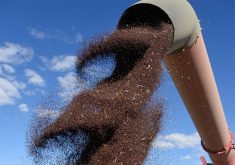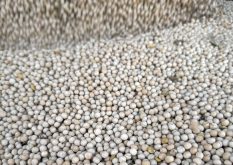A scorching, severe drought blankets southern China, raising questions about what it will mean for crop production there and the Asian giant’s need for grain imports.
We don’t know enough yet to answer that question but here is what I was able to find out about the situation.
The drought and heat in the mid-40 C range are expected to mostly affect rice production in the Yangtze River basin. Corn and soybeans, which are grown mostly in the northeast part of the country, have escaped the extreme weather.
Read Also

Canola used in only quarter of Canadian biofuel
Less than one-quarter of the biodiesel and renewable diesel used in Canada in 2024 was made from canola oil feedstock
China produces three rice crops. The early season crop is harvested already and amounts to about 15 percent of total output.
So, the drought is affecting the second crop (seeded after the first is harvested) and the single season crop.
Chinese authorities are pulling out all the stops to try to save the rice. They’ve increased the amount of cloud seeding they do to coax moisture from the heavens, as well as drilling wells and digging ditches to bring irrigation water from shrinking lakes and ponds.
There is no official estimate of crop damage yet.
Forecasts from earlier this summer did not ring alarm bells.
The United States Department of Agriculture in its August report estimated China’s rice production at 149 million tonnes, similar to the previous two years. The USDA expected China would consume slightly more than it produces and imports and would wind up with ending stocks of 109 million tonnes, down five million from the 113 million tonnes it had at the end of last crop year. Ending stocks for the 2020-21 crop year were 116.5 million, a record high.
So, by this count, it would seem rice stocks would tighten in China, but it didn’t look like a catastrophe.
A story in the China Daily about efforts to find irrigation water said that the Department of Emergency Management had designated 2.89 million acres of cropland in the Yangtze River Basin is in a drought.
That is significant but the USDA estimates total rice area in China at 74 million acres.
We’ve seen situations in China before, usually with the winter wheat crop, where dry weather as the crop comes out of dormancy triggered emergency actions, but spring rain saved the day.
This time rice is in its flowering period when the drought and heat hit.
What would happen if the rice crop were severely damaged?
The first response would be to dig into the reserve stocks and import from other rice producers.
It is never clear that China’s grain reserves are what they say they are. We hear often that the reserve numbers are inflated and that the quality is not good.
As for imports, rice can usually be obtained from India, the world’s biggest exporter, as well as from Thailand and Vietnam.
In its August report, the USDA trimmed India’s production forecast because of dry weather during planting but the expectation for 128.5 million tonnes of production was in line with last year’s crop. The monsoon has been disappointing in northern India so production could slip more, however, the government retains large buffer stocks so shortages are not expected .
The factors around the world that caused high grain and oilseed prices did not spill over into rice prices.
The United Nations Food and Agriculture Organization tracks global rice values relative to the average set in 2014-16. In July the average was about eight percent higher than the 2014-16 period.
But if China were to significantly boost imports the potential is there to lift rice markets.
World trade in rice is much less than the trade in other staples. Rice trade is about 54 million tonnes per year compared to more than 200 million for wheat.
The USDA August report forecast China’s rice imports at six million tonnes, only slightly more than last year. But if China needed to increase imports to, say, 10 million tonnes, it would be a big deal in the world of rice trade.
China could also offset tight rice supplies by substituting more wheat.
You might remember that in March China’s agriculture minister said the winter wheat crop was in the worst condition ever after flooding and excess rain during planting in the fall.
But the weather this spring turned ideal for the crop leading to an average sized harvest. However, the USDA says the quality suffered, with low protein, broken kernels and higher toxins because of rain just before and during harvest.
The USDA’s current forecast is for China to import 9.5 million tonnes of wheat in the 2021-22 crop year, the same as last year.
Taking all this information together, I’m left with the impression that even if China has a poor rice crop, the impact on the wider international grain market will be limited, but that could change in coming months with more data.

















